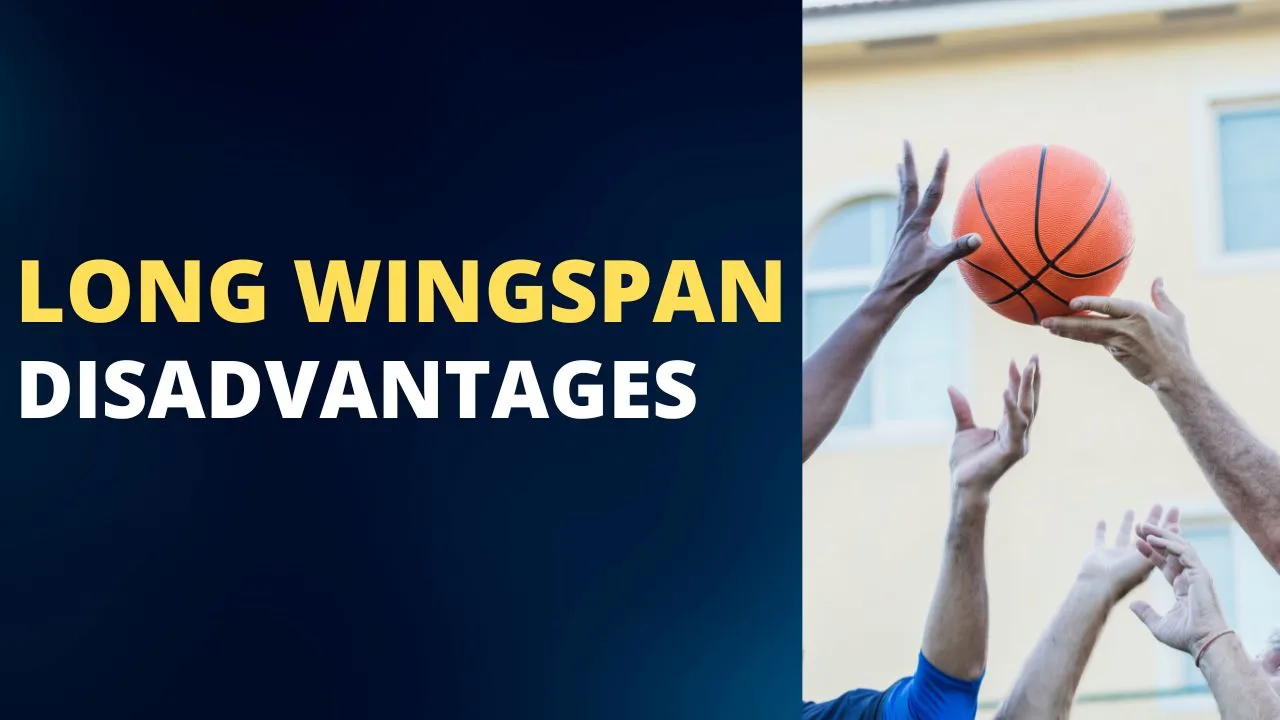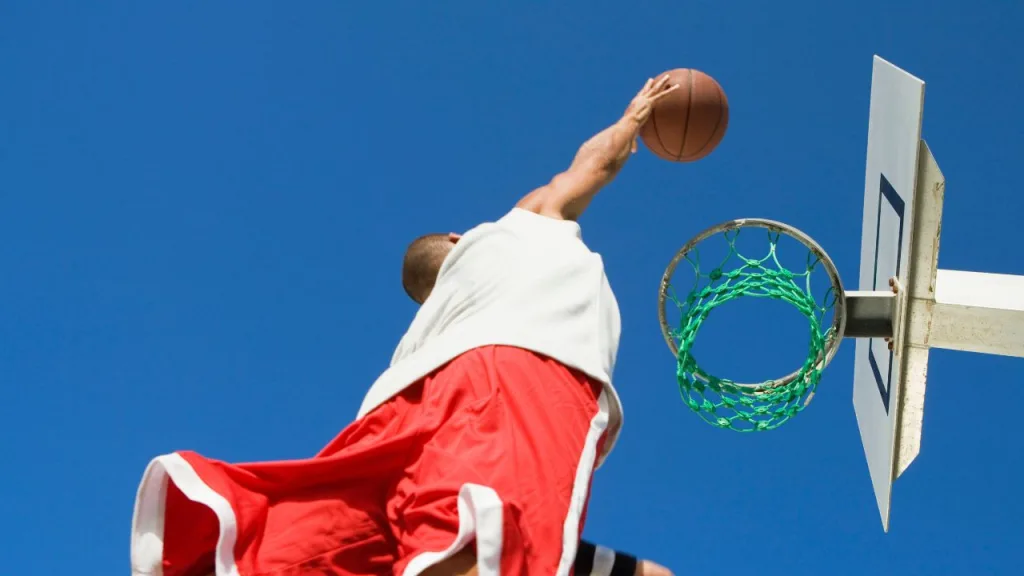Last Updated on: 8th February 2024, 12:21 am

Towering wingspans are often hailed as a gift in basketball, granting players seemingly effortless reach and defensive dominance. But what if the narrative isn’t so clear-cut?
Imagine Giannis Antetokounmpo struggling with his dribble due to his long limbs or Dirk Nowitzki’s iconic fadeaway hampered by a slightly awkward release.
Believe it or not, even the most coveted physical attributes can have unexpected downsides.
Buckle up, ballers, because we’re diving into the fascinating world of long wingspans and exploring the hidden challenges they can present. Get ready to see how, in some cases, exceptional reach can become a balancing act, impacting shooting, agility, and even injury risk.
Shooting Symphony Disrupted: When Long Arms Miss a Note
Think Steph Curry’s lightning-fast release is pure magic? It sure is, but achieving that smooth shooting motion can be an unexpected hurdle for players with exceptionally long wingspans. Imagine KD struggling to find a comfortable release point due to his extended reach or Rudy Gobert’s long limbs causing a slight hitch in his follow-through. The culprit? Mechanics and speed.
Longer arms require a wider range of motion during shooting, potentially disrupting the delicate balance between control and fluidity. Studies suggest this can lead to slower releases, impacting shot accuracy and consistency, especially under pressure. Even seemingly basic free throws can become trickier with longer limbs finding their rhythm. Remember Dirk Nowitzki’s unique one-legged fadeaway? While an iconic shot, it partially resulted from adapting his mechanics to his long wingspan.
Ball handling, the foundation of offensive creativity, can also be affected. Dribble between the legs? It isn’t easy when your arms brush the floor with every crossover. Imagine Ben Simmons, despite his exceptional height, facing challenges with tight dribbling moves due to his long limbs. It’s a constant negotiation between utilizing their reach for steals and interceptions while maintaining control of the ball in close quarters.
So, are we saying players with long wingspans are doomed to shooting struggles? Of course not! Dedication and adapting mechanics can overcome these challenges. Look at KD’s evolution into a shooting machine or Giannis’s constant refinement of his release. Remember, talent and hard work often trump raw measurements. But understanding these potential downsides adds another layer to the complex equation of basketball performance.

Agility and Injury Concerns with Long Limbs
Remember that graceful crossover you just witnessed, leaving defenders grasping at air? Now imagine doing the same with arms brushing the floor on every dribble. That’s the reality for some players with exceptional wingspans, where agility and movement on the court take on a different dimension.
Despite his size, Rudy Gobert faces challenges staying in front of quicker guards due to the inertia of his long limbs. Imagine Ben Simmons’ inability to weave through tight spaces as effortlessly as smaller players with shorter wingspans. While their reach offers defensive advantages, changing direction and maintaining balance can be more demanding.
But the concerns don’t stop there. The risk of injuries also becomes a factor. Longer levers, like extended arms, create greater torque during falls or awkward landings, potentially increasing the risk of shoulder dislocations, elbow injuries, or even stress fractures. Remember Kevin Durant’s history of foot and ankle issues, sometimes attributed to the biomechanics of his long limbs.
However, before we paint a bleak picture, remember adaptation is key. Agility drills, targeted strength training, and mastering efficient footwork can mitigate these challenges. Look at Giannis Antetokounmpo’s incredible transformation from an awkward teenager to a gazelle-like force on the court. His dedication to improving his agility and movement patterns proves that long limbs don’t have to be a hindrance.
Furthermore, proactive injury prevention strategies play a crucial role. Regular stretching, strengthening exercises focused on key muscle groups, and proper recovery techniques can significantly reduce the risk of injuries associated with long wingspans.
So, are players with long wingspans doomed to be clumsy giants? No! But understanding the agility and injury concerns that come with their extended reach adds another layer to the story. It’s not just about the highlight-reel blocks and impossible rebounds; it’s about the constant negotiation between utilizing their unique physical attributes and overcoming their challenges.
Finding the Sweet Spot: Does a “Perfect” Wingspan Exist?
The allure of the “perfect” wingspan, a magical number guaranteeing basketball dominance, is tempting. But does it truly exist? The answer, like much in basketball, is nuanced and complex.
While studies suggest certain wingspan ranges might be advantageous for specific positions (e.g., longer for centers, shorter for guards), these are just general trends:
- Individual talent reigns supreme: Remember Michael Jordan, a legend with a shorter wingspan, or Giannis Antetokounmpo, defying traditional norms with his unique physicality. Their skill, work ethic, and basketball IQ transcend any measurement.
- Adaptation is the name of the game: Players like Dirk Nowitzki or Ben Simmons demonstrate how adapting mechanics and training strategies can overcome potential limitations associated with their wingspan.
- Playing style matters: A “perfect” wingspan for a bruising center might not suit a shifty point guard. Each player finds his or her sweet spot based on strengths, weaknesses, and overall playing style.
Instead of obsessing over a mythical ideal, remember basketball is a symphony of diverse skills and strategies. Wingspan plays a role, but it’s just one instrument in the orchestra. A maestro focuses on harmonizing all elements, not just worshipping a single instrument.
The Final Take:
Long wingspans offer undeniable advantages, but they come with unique challenges. Understanding these complexities allows for a deeper appreciation of the remarkable abilities players develop, regardless of their physical attributes. Remember, true basketball magic lies in the dedication to craft, constant pursuit of improvement, and each player’s unique brilliance to the court. So, the next time you see a highlight-reel block or a seemingly impossible shot, celebrate the player’s journey, not just the length of their arms. After all, basketball greatness comes in all shapes, sizes, and, yes, wingspans!
So, ballers, let’s discuss! What are your thoughts on the impact of wingspan in basketball? Do you think there’s an “optimal” wingspan? Share your opinions and join the conversation!